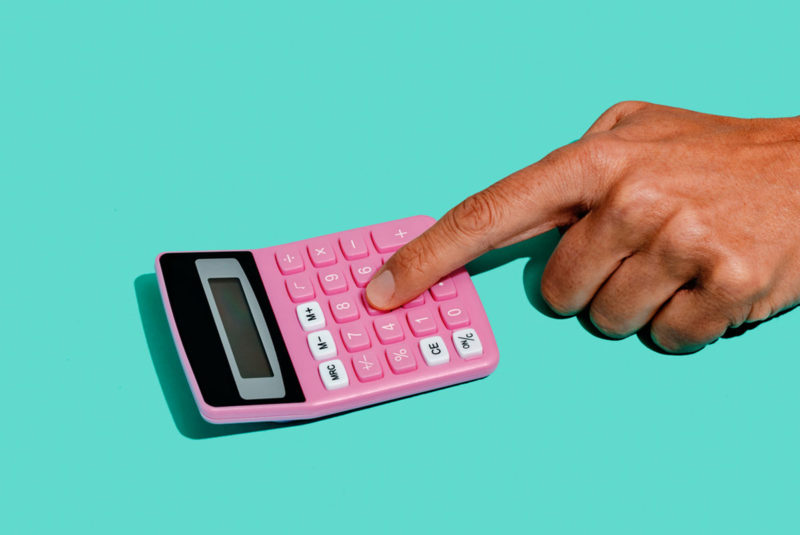The year 2020 will be burned into our collective memory for many reasons. It was a year filled with headlines. So, if you missed it then, the financial news highlighted that FICO® released its newest credit score, the FICO® Score 10.
Nonetheless, FICO®’s newest credit scoring system (the FICO® Score 10 Suite) is noteworthy in its own right. It signals the biggest change to the FICO® Score since 2014.
Anytime FICO® announces an updated version of its credit score, it’s wise to pay attention. Credit scores — and the FICO® Score in particular — can have a big influence on your financial life. Anytime you apply for credit there’s a good chance the FICO® Score will be involved in the process. 90 of the top 100 U.S. lending institutions use the FICO® Score to assess risk.
Thanks to FICO®’s new system, your credit score could change even if your credit history stays the same. Whether that change is for the positive or the negative, however, depends on the details on your credit reports. Here’s a deeper look at the new FICO® models, and what FICO® 10 could mean for you.
Why Is There a New FICO® Score?
It may not happen every day, but the introduction of a new credit score isn’t uncommon. The first FICO® credit bureau score came on the scene over three decades ago — at Equifax® in 1989. Since that time, Fair Isaac Corporation (commonly called FICO®) has developed many new versions of its credit scoring models (FICO® 3, FICO® 5, FICO® 8, FICO® 9, and so on).
VantageScore® Solutions is another well-known credit score developer. Like FICO®, the company has released multiple versions of its scoring software since the credit score developer introduced the world to the first VantageScore® model in 2006.
The purpose of credit scores is to predict risk. Credit scoring models assess your risk by evaluating the details of your credit reports. In particular, FICO® and VantageScore® credit scores predict the likelihood that a consumer will become 90 days late or worse on a credit obligation in the next 24 months. High credit scores indicate a lower likelihood of this issue occurring. Low credit scores indicate the opposite.
Credit behaviors and credit data changes
The information credit score developers use to predict risk changes over time.
- Credit behaviors of consumers change.
- The associated risks of different credit behaviors change.
- Credit bureau reporting policies and lending practices evolve as well.
Credit score developers need their scoring models to be as accurate as possible to remain effective and competitive. So, the changes outlined above make it necessary to develop new scoring models.
Here’s an example of why new credit scores are necessary. In the past, people borrowed money less frequently. So, people who took out new loans often were associated with a higher level of credit risk.
Now that consumers as a whole use credit more often, credit score developers updated their scoring algorithms so that behavior doesn’t trigger a score penalty that would be uncalled for.
Another reason credit score developers create new scoring systems is that the major credit reporting agencies change their policies. For example, credit reporting agencies no longer include tax liens or judgments on credit reports.
In the past, these negative items helped scoring models predict risk for lenders. (Borrowers with public records may be more likely to default on future credit obligations.)
So, FICO® needed new ways to predict risk now that certain public records aren’t available for consideration.
How Are the New FICO® Scores Different?
The new FICO® Score 10 Suite includes two types of credit scores — the FICO® Score 10 and the FICO® Score 10T. According to the company, these scores outperform all previous models and can help lenders cut their number of defaults by ten percent. (Default, according to FICO®, is a 90-day or worse late payment.)
Here’s a look at how the new scoring system predicts default 10% better than previous versions of FICO® Scores.
Trended data
FICO® 10T signals the first time a FICO® Score will consider trended data.
Trended data is the historical account information that appears on your credit reports — especially as it pertains to your credit card management habits. It gives lenders and credit card issuers a closer look at your accounts. For example, it shows whether your credit card debt has been moving up, down, or staying roughly the same over the past 24 months.
Trended data includes details such as:
- Monthly account balances
- Original credit limit
- Scheduled payment amounts
- Actual payment amounts
These details show if you’re someone who pays off your full credit card balance each month (aka a transactor), or someone who revolves an outstanding balance (aka a revolver). If you’re a transactor who makes a habit of paying off your credit card balances each month, you’re using your credit card responsibly. As a result, your scores might improve under FICO® 10T.
Late payments
Credit scoring models already put a lot of emphasis on your payment history. So, a payment delinquency is likely to trigger a credit score drop under any FICO® credit scoring model. But under FICO® 10, a new late payment could damage your credit scores even more than it would with previous versions of the FICO® Score.
Personal loans
Using a personal loan to consolidate credit card debt is a smart move that many personal finance experts recommend. The consolidation strategy has the potential to help you save money in interest fees if you can secure a lower interest rate than you’re paying on your current credit card accounts. As a bonus, consolidating revolving credit card debt with a personal loan (aka installment debt) might improve your credit scores.
But reports indicate that FICO® 10 may feature a departure from the way scoring models have treated personal loans in the past. Namely, your scores could take a hit if you use a personal loan to consolidate your credit card debt, but then run up balances on those same credit card accounts again.
This scenario, where your debt level continues to rise, is already a bad idea. You only want to consolidate your credit card debt if you’re sure you can break the overspending habit.
Otherwise, you could suffer some serious financial consequences as you fall deeper and deeper into debt. Harsh, but true – with FICO® Score 10, your credit scores may now suffer even more as a result of this high-risk behavior.
How Is FICO® 10 the Same?
Despite the differences outlined above, FICO® 10 is similar to previous FICO® models in several ways.
FICO® 10 features:
- The same credit score range of 300 to 850.
- Similar credit scoring factors that influence your credit score.
- Minimum requirements you’ll need to meet to qualify for a FICO® Score.
- The ability to use Experian™ Boost as a credit building strategy under the new scoring system.
How Could FICO® 10 Affect You?
Like any credit scoring model, FICO® 10 may benefit some people and hurt others. According to FICO®, here’s what consumers may experience under the FICO® 10 scoring system:
- 40 million consumers may have a credit score increase of 20 points or more.
- 40 million consumers may have a credit score decrease of 20 points or more.
- 110 million consumers may have a credit score change (for the positive or negative) of fewer than 20 points.
The impact that FICO® Score 10 has on you all depends on the details on your credit reports. In general, people with good credit scores are likely to see their credit scores improve. Meanwhile, if you already have bad credit scores, they might drop more under the new scoring system.
How Can You Prepare for FICO® 10?
If you’re worried about the FICO® Score 10 setting your credit scores back, there’s good news. It takes time for lenders to adopt new credit scoring systems, and sometimes lenders don’t convert at all. Since it’s unlikely that lenders will use FICO® Score 10 to assess your credit reports in the immediate future, you have time to make changes.
When you build good credit habits, your credit scores may improve under any credit scoring model, FICO® Score 10 or otherwise. Here are some tips to help you get started.
- Pay on time – no exceptions. Every credit scoring model pays attention to how you pay your credit obligations. Even one 30-day late payment could set your credit scores back.
- Pay off your credit cards. The best way to manage your credit cards is to pay off your full statement balance every month. This habit is good for your bank account and your credit scores. Paying off your credit cards can help keep your credit utilization low. It can also establish good trended data details for the future.
- Consider paying down personal loans. Once your credit card balances reach $0, you might want to consider chipping away at your personal loan balances. If you take this approach, it’s wise to start with the loan with the highest interest rate first (known as the avalanche method). Although eliminating debt is usually a good financial move, paying off personal loans probably won’t do much for your credit scores now. However, it might put you in a better position in the future — if and when more lenders begin using FICO® Score 10.
- Maintain a good credit mix. Having a mixture of account types on your credit reports can be good for your FICO® Score. It can help to show some revolving accounts (aka credit cards or revolving lines of credit) and installment accounts (auto loans, personal loans, mortgages, etc.). Above all, make sure you manage all your accounts well and always pay on time.
- Monitor your credit reports. When you monitor your three credit reports (Equifax®, TransUnion®, and Experian™), you can track your credit improvement progress. This good habit can also help you detect fraud and discover credit reporting errors if these challenges happen to you.
Bottom Line
If a lender uses FICO® 10 or FICO® 10T to score your credit reports, your credit scores might look different than they would under a different scoring model. Yet there are already hundreds of credit scores on the market. So, this difference in credit scores is already a potential issue.
You can’t control whether a lender uses an old credit scoring model or a new model to assess your credit reports. However, you do have a great amount of control over the data that appears on your credit reports.
Follow the good credit management habits outlined above. Then, your numbers should be in decent shape no matter what credit scoring model a lender uses to evaluate you.
The Short Version
- FICO®’s latest scoring models (FICO® Score 10 and 10T) have a new way to analyze and score the data on your credit reports, using historical trends and placing new emphasis on late payments
- The new FICO® Scores have been available for a while, but lenders typically take time to adopt new scoring models, if they do at all
- FICO® 10T is the first time a FICO® Score will consider trended data, which is the historical account information on your credit reports, especially concerning your credit card management habits




